Signify – the company that used to be known as Philips Lighting – has taken its Philips Hue lighting products to a lot of interesting places in their short life. From smart bulbs to light strips, indoor outdoor and portable lighting, the company is always bringing new Hue-branded products to market that tackle a certain need or requirement, and they all fit into the expanding Hue ecosystem.
Today we’re taking a look at Hue Play, a new light bar product that might take centre stage in your lounge room and give you a reason to upgrade some of your existing lights. Hue Play has been on sale for a while overseas, but it’s only recently come to the Australian market.
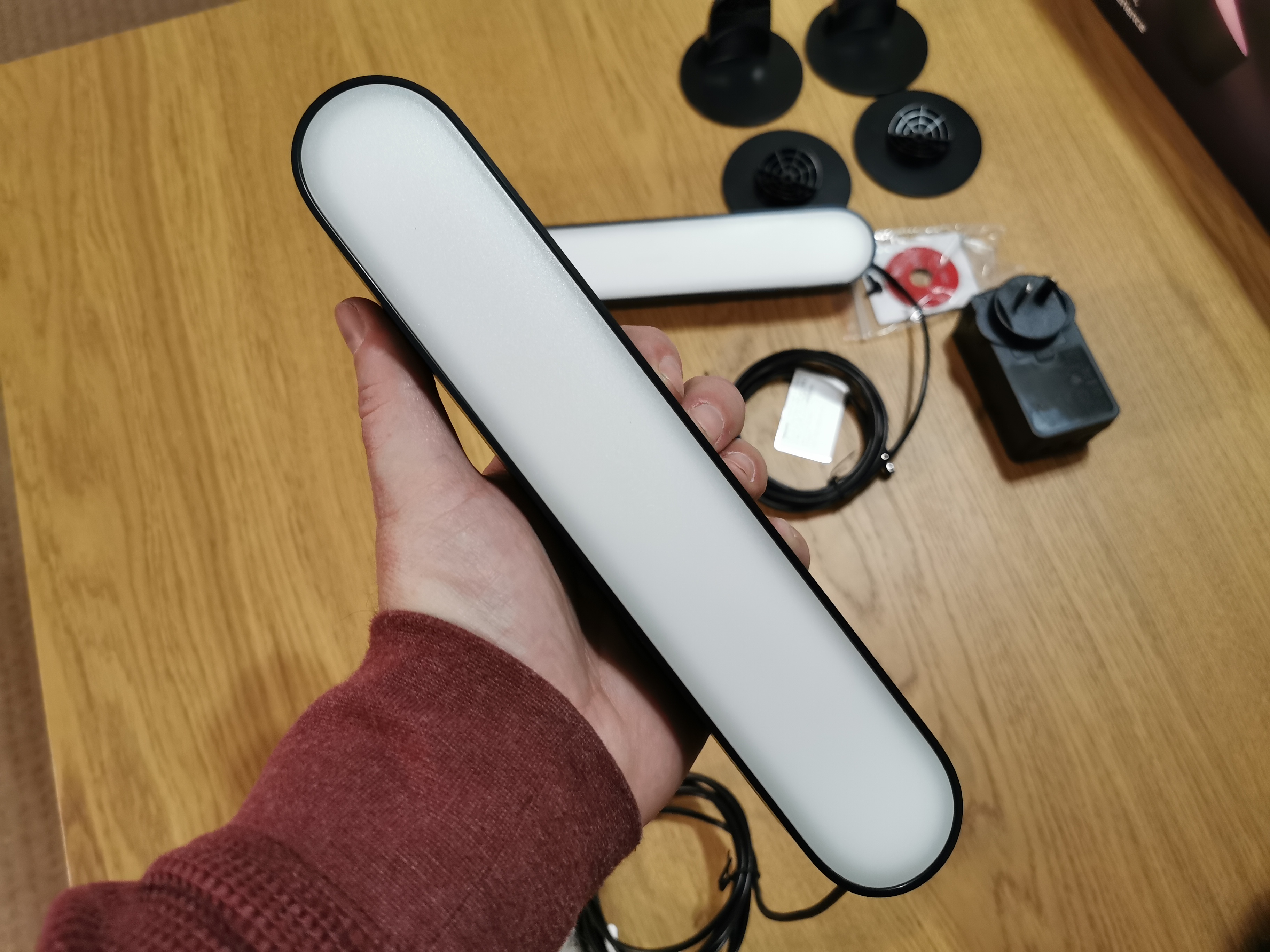
Each Play light bar is about a foot long, 10cm across and 10cm deep. The outer shell is hard black plastic (also available in white), with the power cord attached and a couple of screw holes for mounting options.
Inside, each light bar is not that much different from a small light strip but the opaque white front (or back, depending on how you look at it) diffuses the light, spreading it across the wall.
Hue Play ships as a single or double light bar “base unit” – we’ve got the double set. You get a single AC power adapter in the box with three output sockets, important because you can also buy an extension that’s just a light bar that plugs into this socket (which also means you need to be careful if you’re buying a single bar not to accidentally buy the extension).
Inside the box you’ll get the light bar(s), a power adaptor, and for each light bar a plastic foot to stand it upright and a plastic ring to mount it on the rear of a television or monitor (or something else) with a screw to attach the mount of your choice, and an adhesive circle to help with mounting it on a device.
Hue Play isn’t much to look at, but that’s the point – the Play bars are really designed to sit behind things, but they’re also unobtrusive and have a small footprint so you can sit them out in the open if it suits your room layout and lighting solution if you like.
If your TV isn’t wall mounted (maybe, like me, you live in a rental property) then you’re pretty much guaranteed to have space behind it on your TV cabinet or the like to place the light bars, either standing or stuck to it.
Each cord is 2 metres in length, so with a single power supply you can get the lights 4m apart. If that’s somehow not good enough, you can also buy a 5m extension from some retail stores. If you need multiple power supplies, you might do better to buy single light bars instead of the extension.
I’ve had a light strip behind my TV cabinet for a while. Like any other Hue product, it’s been app- and voice-controlled so I’ve been able to ask Google to “turn on the TV light” or “make the TV light blue”. Hue Play is replacing that light strip for a couple of reasons.
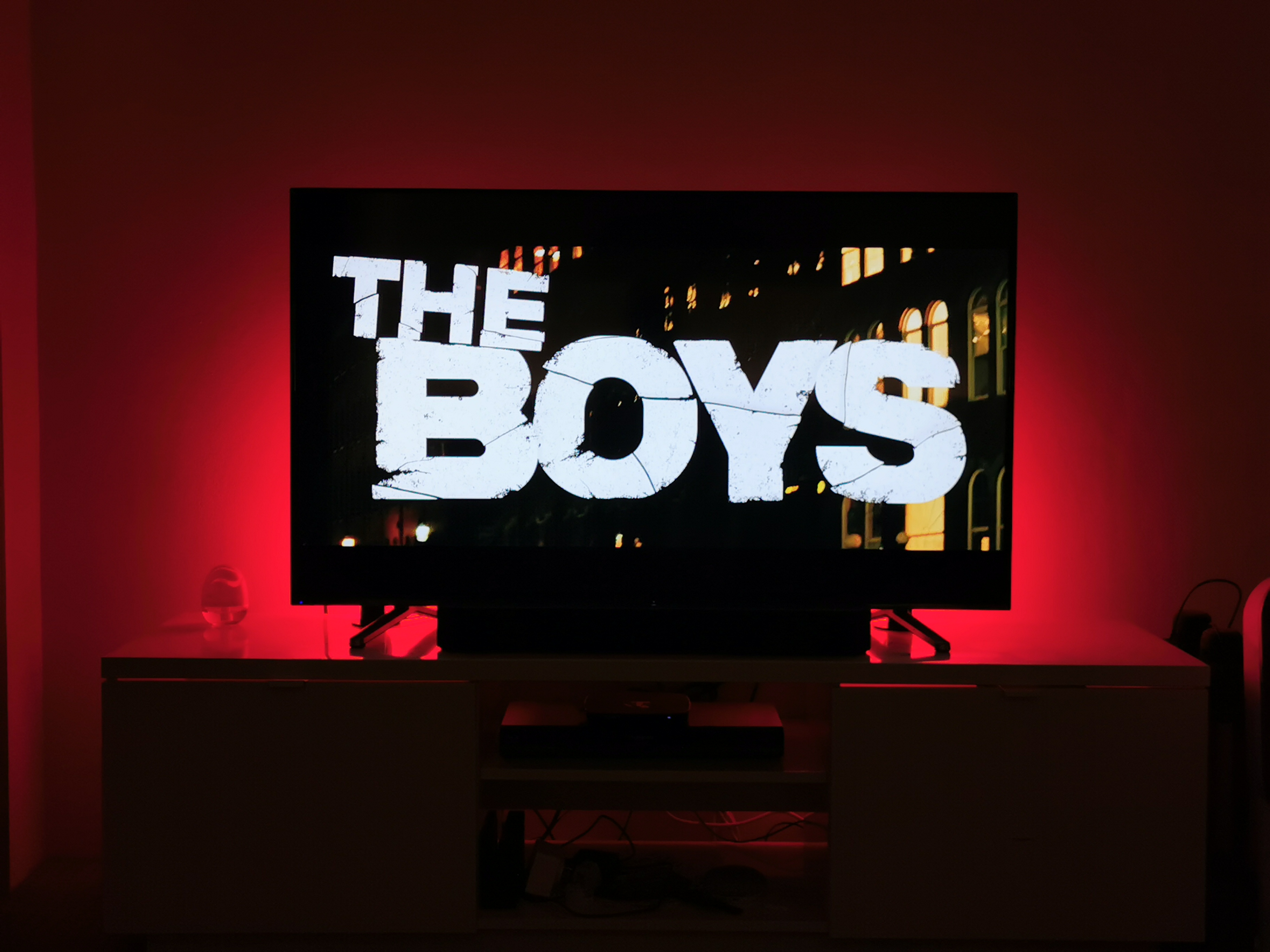
Firstly, the mounting is much simpler – I don’t need to stick anything to the back of the TV cabinet (things that get stuck there eventually fall off). The two Play light bars are sitting behind my TV completely out of sight, but far enough from the wall that they light a *lot* of the wall behind it.
Second is the uniformity of the lighting. The light strip was never actually the right length for the TV cabinet, so it was doubled over on itself in a couple of places creating an uneven light effect. Additionally, every individual LED on the light strip casts its own individual local light. They’re actually quite intense.
Lighting from the Play light bars is much better because of the diffusion built in to the device. The light cast just looks better, it’s more even and it reaches further up the wall.
I’ve taken the light strip that used to light the TV and instead stuck it to the back of the couch, against the wall. The size of the strip is perfect for it, and the way that it lights the room makes it a much better use of the strip.

The pictures here are pretty dramatic, with red and blue lighting. Truthfully though, most of the time the Play light bars are set to a warm white or very slight yellow/gold to provide a pleasant light around the TV while I’mdoing other things in the house rather than being the focus of the room.
The Hue ecosystem is one of the most mature and reliable around in smart home control. Devices are discovered easily, room management is simple and the app controls for the lights’ brightness and colours are simple and intuitive. It’s a model that more smart home device ecosystems should strive to follow.
It’s all connected to Google Assistant, so voice control is simple and you can also control the lights via Routines.
It’s good to see Signify making use of some of Google’s more advanced features as they roll out, too – Google Assistant has always been markedly slower at controlling devices through ZigBee hubs like Hue because of the cloud service requirements. Use of the new local home SDK is making the Assistant’s control over Hue notably faster. Lights now react to your voice commands almost immediately, a welcome change – but not specific to Hue Play.
While we do love Hue products, you should bear in mind that they’re far from the cheapest devices on the market. A single Hue Play light bar base pack runs $119 while the double is $219. The extension pack (a light bar with no power supply) is $99. The 5m extension cable is $40.
While Hue sits at the upper end of the pricing scale for smart home devices, it always feels like you get what you pay for. Hue is a quality product ecosystem, and it’s a hassle free set up.

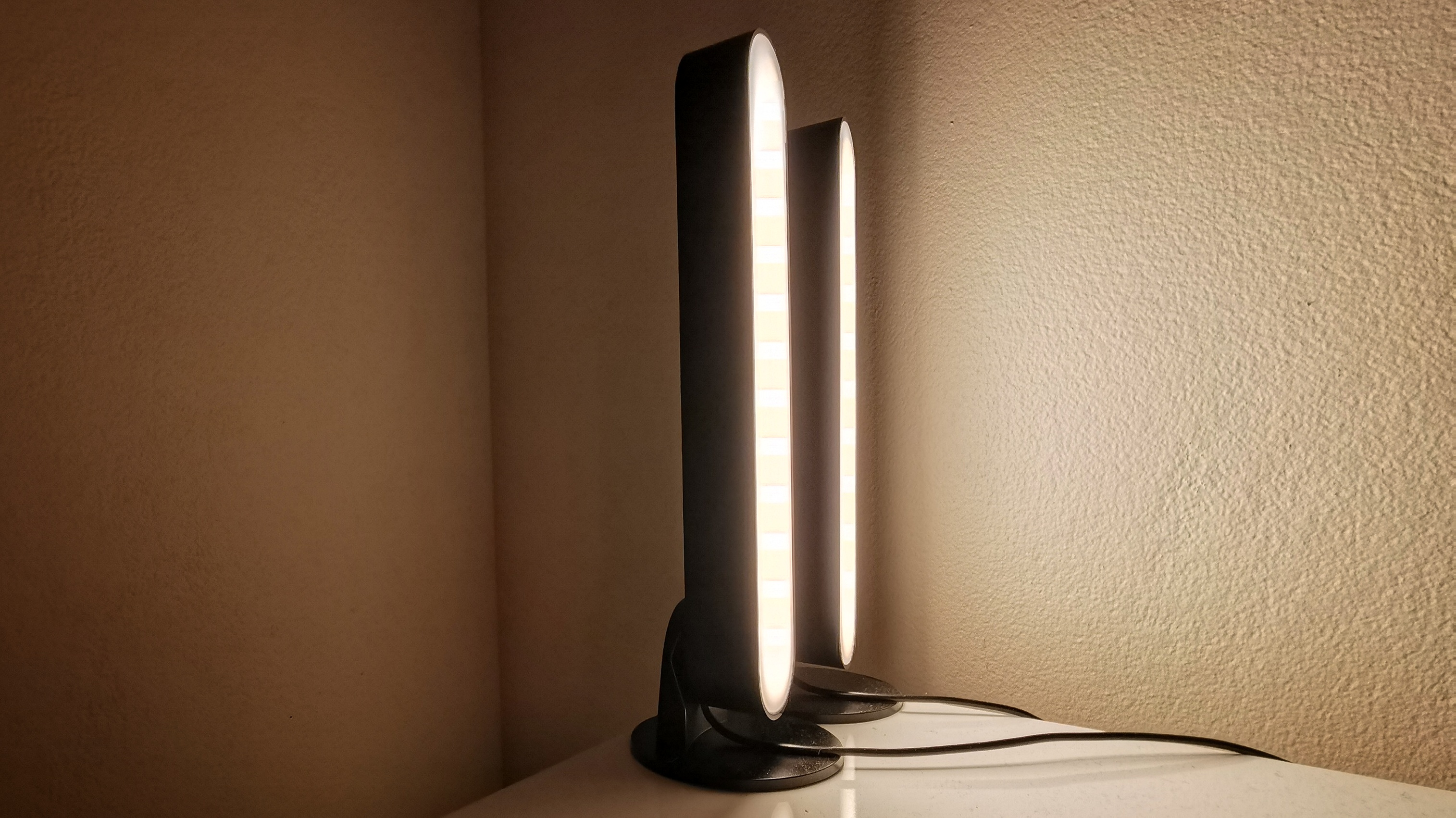
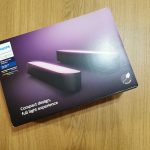
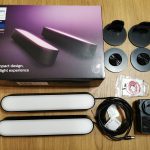
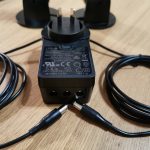

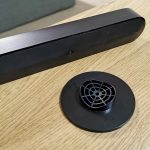
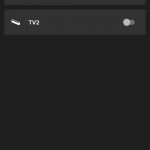
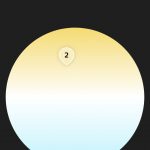

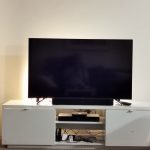
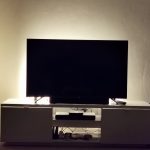



I have a single hue bulb behind my tv for the same if not better effect as there’s no gap in the light
These particular “smart” lights will *really* shine when the “Philips Hue Play HDMI Sync Box” is *eventually* released in Australia (it comes out in North America next month)… The “Philips Hue Play HDMI Sync Box” is a HDMI input / output box that sits between your television and your various devices (Sony PlayStation 4, Apple TV, etc…), changing the color of the lights to match that of the content shown on-screen!
Apparently it won’t be cheap though – US$230, which is a whopping AU$340.59 at the time of writing, BEFORE the “Australia Tax”!